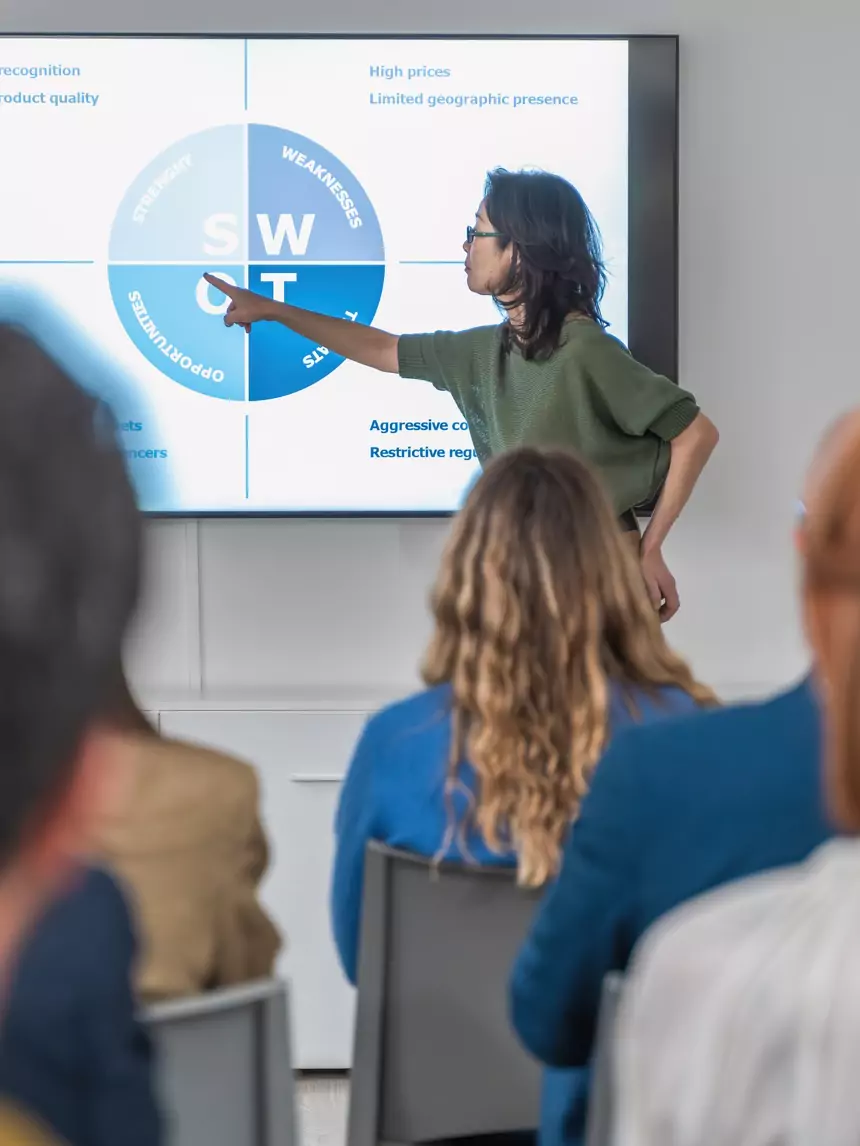Co-Founder Taliferro
Engaging Presentations
A strong presentation grabs attention, delivers your message clearly, and sticks with your audience. Whether pitching an idea, presenting a project, or teaching, mastering this skill is crucial. Here are 10 steps to create a presentation that educates and engages.
1. Know Your Audience
Understand your audience. Their needs, expectations, and preferences shape how your message lands. Tailor your content to connect with them.
2. Define Your Objective
Be clear on your goal. What do you want your audience to take away? A focused objective ensures your message is sharp and effective.
3. Organize Your Content
Structure matters. Start with an attention-grabbing intro, move through your main points smoothly, and finish with a memorable closing that drives home your message.
4. Design Your Slides
Your slides should complement your message, not overwhelm it. Use visuals like images or graphs, keep text minimal, and ensure your design is clean and easy to read.
5. Engage with Storytelling
Stories resonate. Use them to illustrate your points and make your content relatable. They build an emotional connection and make your message stick.


6. Practice and Rehearse
Rehearse your delivery. Focus on pacing, tone, and clarity. Record yourself or get feedback to fine-tune your presentation.
7. Use Body Language and Eye Contact
Nonverbal communication matters. Maintain good posture, use natural gestures, and make eye contact to show confidence and connect with your audience.
8. Be Ready for Q&A
Prepare for questions. Know your material well, listen carefully, and provide thoughtful responses. If unsure of an answer, offer to follow up later.
9. Keep It Interactive
Engage your audience with polls, quizzes, or group activities. Interaction boosts engagement and makes your presentation more dynamic.
FAQ: Crafting Engaging Presentations
Q1: Why is knowing your audience important?
A1: It lets you tailor content to their needs, keeping them engaged and ensuring your message connects.
Q2: How do I define my objective?
A2: Focus on what you want the audience to take away. Keep your goal clear and specific.
Q3: What are tips for visually appealing slides?
A3: Use minimal text, visuals like images and graphs, and consistent fonts and colors for easy readability.
Q4: Why is storytelling important?
A4: Stories make your content relatable, build emotional connections, and make your message memorable.
Q5: How can I rehearse effectively?
A5: Practice multiple times. Focus on pacing and clarity. Record yourself or get feedback to improve.
Q6: What role does body language play?
A6: Positive body language, like posture and gestures, shows confidence and helps connect with your audience.
Q7: How should I handle Q&A?
A7: Be prepared, listen carefully, and answer thoughtfully. If unsure, follow up later.
Q8: Why is interaction important?
A8: Interaction keeps your audience engaged and makes your presentation more impactful.
Conclusion
A great presentation takes planning, engaging content, and confident delivery. Know your audience, focus on your message, and practice to ensure your presentation leaves a lasting impression.

